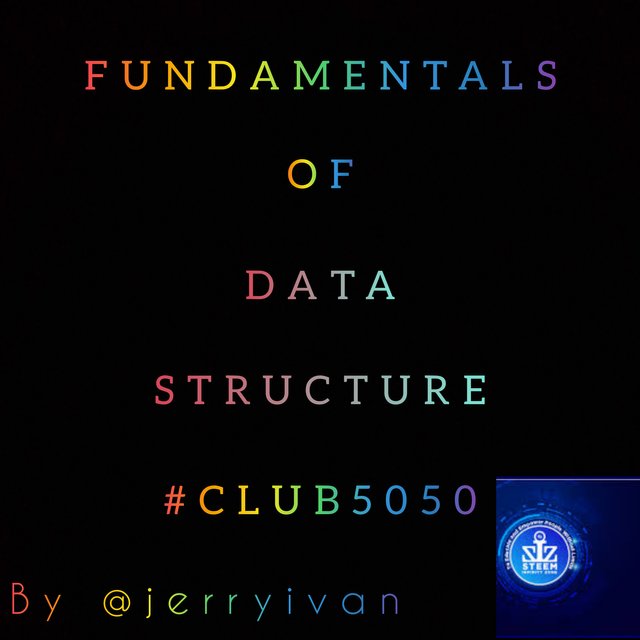
I want to appreciate all the members and coordinators of this community for their support especially to the compliance of #club5050. I say a very big thank you to all.
Today, I will be sharing with you on "DATA STRUCTURE". I believe you will learn a lot after reading.
A data structure is defined as the way data is being organized and stored having relationship with each other.
Note:- The way or ease at which you store data can tell the way or ease at which you retrieve the data. Arrays store data in a contiguous manner (side by side).
Advanced knowledge about relationship between data item allows designing of efficient algorithms for the Manipulation of data.
Sometimes it comes with mathematical computation between Data-type.
Data structures allows us to achieve an important goal; Component reuse.
When a particular component structures bis achieved, it can be reused as many times as possible. Example of data structure are Queue, Trees, List, Tables, Craft, Stacks e.t.c.
Once each data structures have been implemented, it can be used over and over again in various application.
Many algorithms required that we use a proper representation of data to achieve efficiently (depending on the way data items are being stored).
Each data structures allows insertion, access and deletion. The representation of data and the operation that are allowed for it is called "DATA STRUCTURES OR PERMISSIBLE OPERATION".
PREMITIVE DATA STRUCTURES:- This is one of the data structures in which data items are operated closets to the machine level instruction e.g Int, Char, and Double.
NON-PREMITIVE DATA STRUCTURES:- This is one of the data structures in which the data items are not operated closets to machine level instruction.

TRAVERSAL:- This is the processing or going through each element in the list.
SEARCH:- This refers to finding the location of the element with a given value.
INSERTION:- This refers to adding a new element to the list.
DELETION:- This refers to removing an element from the list.
SORTING:- This refers to arranging the element in some type of order.
MERGING:- This refers to combining two lists into a single list.
Data must be structured so that it can be accessed.

Abstract data type is a specification of a set of data and the set of operations on the data e.g include associative array stack, Queues and Tree.
It helps to efficiently develop well designed programme.
It facilitates the decomposition of the complex task of developing a software system into a number of simpler subtask.
It helps to rebuild the number of things the programmer has to keep in mind at anytime.
Breaking down a complex task into a number of easier subtasks also simplifies testing and debugging.
@siz-official
@eberechi10
@anyiglobal
@vvarishayy
@swaylee
@cryptokraze
Good totorial related data structure. Keep it up dear bro and learn more with steemit.
Downvoting a post can decrease pending rewards and make it less visible. Common reasons:
Submit
Thanks bro for your encouragement, I appreciate
Downvoting a post can decrease pending rewards and make it less visible. Common reasons:
Submit